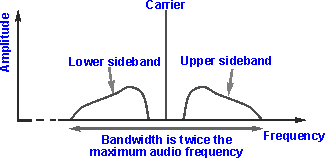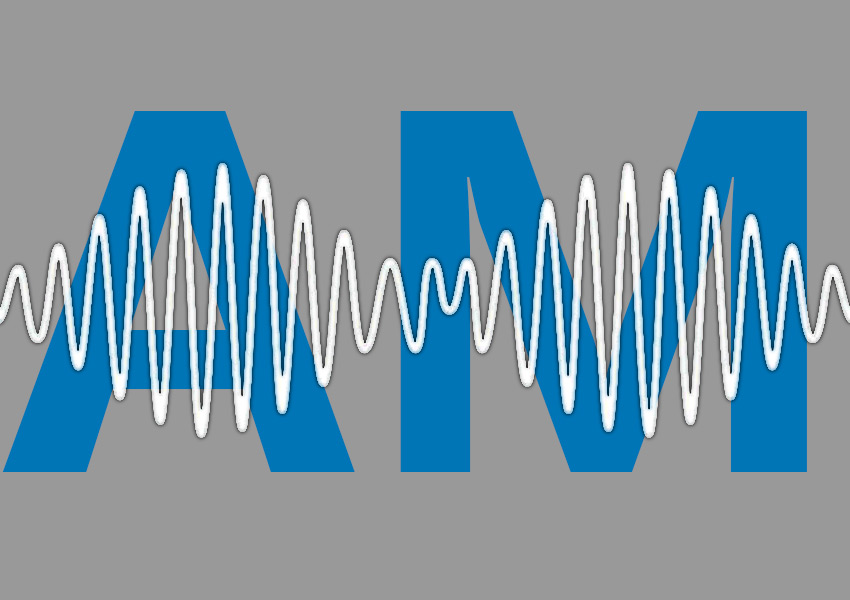The process of separating or extracting the modulation from a signal is called demodulation or detection.
For amplitude modulation, the process of demodulation or detection can be accomplished very simply using a diode, or it may be achieved in other ways that provide more effective demodulation of the waveform.
As amplitude modulation is still widely used as a result of its simplicity, receivers incorporating AM demodulators are manufactured in quantities of many millions each year. Within these radios a simple AM detector consisting of a diode is used.
AM demodulation or detection process
In order to look at the amplitude demodulation process it is necessary to first look at the format of an AM signal.
An AM signal consists of a carrier which acts as the reference. Any modulation that is applied then appears as sidebands which stretch out either side of the signal – each sideband is a mirror image of the other.

Spectrum of an amplitude modulated, AM signal
Within the overall AM signal the carrier possess the majority of the power – a fully modulated, i.e. 100% modulation – AM signal has sidebands which have 25% that of the main carrier.
When demodulating a signal, two basic steps may be considered:
- Create baseband signal: The main element of AM demodulation is to create the baseband signal. This can be achieved in a number of ways – one of the easiest is to use a simple diode and rectify the signal. This leaves elements of the original RF signal. When other forms of demodulation are used, they too leave some elements of an RF signal.
- Filter: The filtering removes any unwanted high frequency elements from the demodulation process. The audio can then be presented to further stages for audio amplification, etc.
The AM demodulation process is outlined in the diagram below. This particular example applies particularly to a diode detector.

Basics of AM demodulation / detection
Types of AM demodulator
There are a number of ways in which an AM signal can be demodulated. There is a balance that needs to be made of the performance of the circuit that is required against the complexity, and hence the cost that can be tolerated.
The major types of AM demodulator are:
- Diode AM detector: This is by far the simplest form of AM demodulator or detector, requiring just a semiconductor (or other form) of diode along with a capacitor to remove the high frequency components. It suffers from a number of disadvantages, but its performance is more than adequate for most applications including broadcast receivers where cost is a significant driver.
- Synchronous AM detector: This form of AM detector offers a higher level of performance, but at the cost of considerably the use of considerably more components. This means that it is only used in receivers where the levels of performance are paramount and can justify the additional component costs.
Both types of detector are widely used, although the diode detector is far more common in view of its simplicity and the fact that it is quite adequate for broadcast applications where performance is not normally an issue.
Note on Amplitude Modulation:
As the name implies, Amplitude Modulation, AM, is a form of modulation in which the amplitude or intensity of the waveform is varied in line with the waveform of the modulating signal. As part of the modulation process, sidebands are created that extend out either side of the carrier..
Read more about Amplitude Modulation
By Ian Poole
Views: 71

